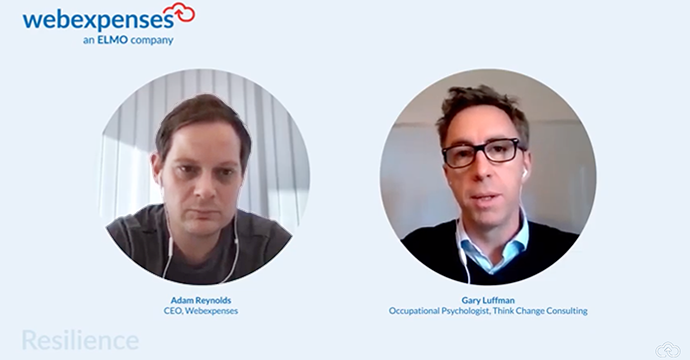
WEX Podcasts: 3 keys to build resilience
One year ago, everything changed.
Since then, we have all experienced numerous challenges, both personally and professionally. Some were predictable and some came out-of-the-blue; some temporary and some extended indefinitely; some were major and some quite small. Whether it’s understanding how a pandemic - and its resulting lockdowns and economic shockwaves - would impact business, or simply missing family and friends...
Through it all, there’s one thing that we’ve needed over the last year: Resilience.
Since 2019, we've been working with Think Change Consulting to help develop resilience and other skills in our team. Think Change combines “neuroscience, psychology and management tools/models to deliver impactful, positive, and long-lasting effects for the people and organisations.”
As a CEO - and a human - one of the biggest takeaways from working with Think Change has been our ability to look at non-tangible elements. Innate attributes we would traditionally associate with people either being naturally good or naturally bad are instead considered from a new viewpoint. Building behaviours, characteristics, and traits through focus, tools, and technique.
Recently, I sat down with Think Change co-founder and occupational psychologist, Gary Luffman, to talk about resilience - and share it with you. We discussed the concept of resilience in-depth, how the brain shapes our approach, tools, and techniques, including three key techniques to honing your own resilience, which you can listen to or read about (below).
The 3 keys to building your resilience
1. Invest in yourself
If you’re going to face a challenge, you want to be optimally prepared to deal with it. It’s critical in this scenario to equip yourself, both mentally and physically, with the right tools and support systems to effectively manage the situation and feel more in control. This is your battle armour.
For example, sleep, exercise, diet, and movement are all elements that can either help build up or detract from your resilience. We often look at challenges, but how often do we look at the environment that shapes our ability to deal with them?
Think about how much better you feel after a long walk, balanced meal, and good night’s sleep. Are you eating right, sleeping well, and moving enough to keep your body battle-ready?
2. Understand your trigger points
One of the workshops that we have been through with Gary is to write down what scenarios fuel your resilience and what drains them. Often in times of crisis or heightened anxiety and stress, we move headfirst into dealing with a challenge without considering the components that have surrounded it.
When faced with a challenge, first ask yourself some questions:
- How ready and well placed am I to deal with the challenges?
- Is it best addressed now or later?
- Can I do this on my own or do I need the support of others?
- Am I fueling my resilience or am I deliberately creating scenarios that are draining my ability?
3. Clarify reality, offer hope
“The leader's role is to define reality, then give hope.” This quote, attributed to Napoleon Bonaparte, is a brilliant precursor to tackling a challenge. It’s important to look clearly at the realities we face, the size of the problem, and the potential outcomes in order to address those honestly and with transparency.
It’s also key to ensure that, regardless of the situation, we see there is hope and the potential for positive outcomes. This has been applied countless times throughout the COVID period: What is the challenge? What needs to be done? And what are the potential upsides?
The key takeaway
So what have I learned? Resilience is not a gift nor an innate talent. It is a skill. It needs to be explored, developed, and nurtured - whether it’s at home or at work; as a team, or without a cavalry.
There is a range of techniques and tools that can be used to help build our resilience. And even though it may ebb and flow, we should always keep working on our “capacity to recover quickly from difficulties”!
Explore our blog to discover more tips and tools for building your skills.
The 3 keys to building your resilience
Invest in yourself
If you’re going to face a challenge, you want to be optimally prepared to deal with it. It’s critical in this scenario to equip yourself, both mentally and physically, to effectively manage. This is your battle armour.
For example, sleep, exercise, diet, and movement are all elements that can either help build up or detract from your resilience. We often look at challenges, but how often do we look at the environment that shapes our ability to deal with them?
Think about how much better you feel after a long walk, balanced meal, and good night’s sleep. Are you eating right, sleeping well, and moving enough to keep your body battle-ready?
Understand your trigger points
One of the workshops that we have been through with Gary is to write down what scenarios fuel your resilience and what drains them. We often move headfirst into dealing with a challenge without considering the components that have surrounded it. When faced with a challenge, first ask yourself some questions:
How ready and well placed am I to deal with the challenges? Is it best addressed now or later? Can I do this on my own or do I need the support of others? Am I fueling my resilience or am I deliberately creating scenarios that are draining my ability?
Clarify reality, offer hope
“The leader's role is to define reality, then give hope.” This quote, attributed to Napoleon Bonaparte, is a brilliant precursor to tackling a challenge. It’s important to look clearly at the realities we face, the size of the problem, and the potential outcomes in order to address those honestly and with transparency.
It’s also key to ensure that, regardless of the situation, we see there is hope.
This has been applied countless times throughout the Covid period: What is the challenge? What needs to be done? And what are the potential upsides?
So what have I learned? Resilience is not a gift nor an innate talent. It is a skill. It needs to be explored, developed, and nurtured - whether it’s at home or at work; as a team, or without a cavalry. There is a range of techniques and tools that can be used to help build our resilience. And even though it may ebb and flow, we should always keep working on our “capacity to recover quickly from difficulties”!

